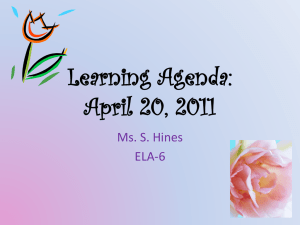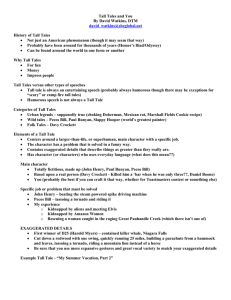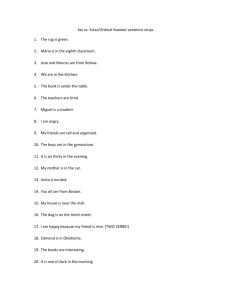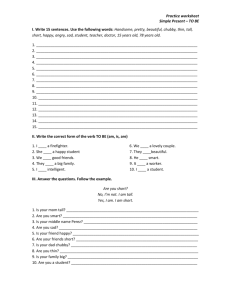Untitled - deercreekintermediate.org
advertisement
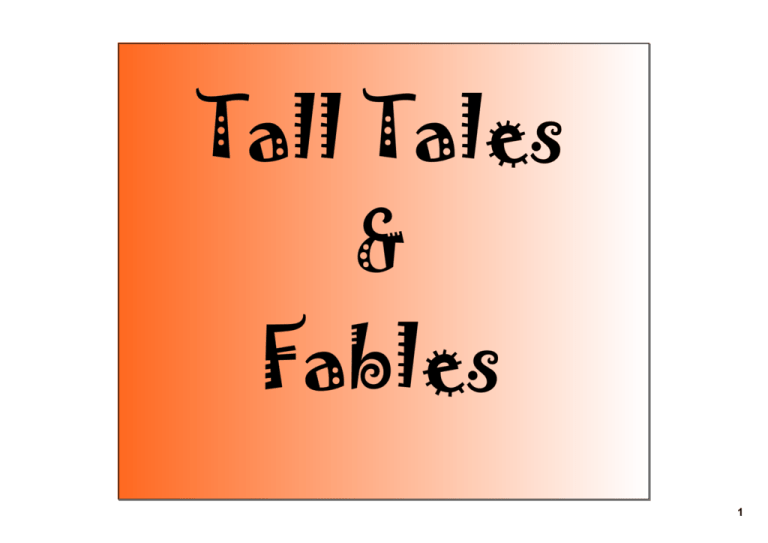
Tall Tales & Fables 1 Tall Tales Why do we exaggerate? Have you ever claimed you were hungry enough to eat a horse, or said that you waited in the rain until you were soaked to the bone? Sometimes in order to express feelings or describe adventures, people exaggerate. As you will see in tall tales, exaggeration can add humor to a story and make everyday experiences sound more interesting. 2 Tall Tales Tall tales became popular when America was growing and people were moving West. These stories were exaggerated and funny to entice people to move and make the frontier sound awesome! So what are tall tales? 3 Tall Tales Humorous stories about events and characters that are exaggerated. 4 Tall Tales • Characters are "larger than life" • stronger, louder, and more extraordinary than regular people. • events and characters seem unbelievable. 5 Read Tall Tale on pg. 641 1. What qualities make Sal Fink "larger than life"? 2. What all has Sal done that seems unbelievable or exaggerated? 6 Read the Tall Tale Uncle Septimus' Beard on page 700 of your textbook. 1. How does the illustration on page 701 give the tale humor? 2. What details about the beard are exaggerated? 3. What happens as a result of the long beard? 4.What are some theories of where he might have gone? 5. What qualities make this a tall tale? 7 8 Assignment: Read a tall tale and tell about it! ‐get into groups of 6 and number yourselves 1‐6. 1. Write the title of the tall tale at your station in your notes. 2. Read the tall tale at your station. 3. Answer the questions in your notes in complete sentences. 4. When the time is up, you will move to a new group and share your information about the tall tale you read. (all the ones will be a group, all the twos will be a group, etc .) 9 Extra Assignment: In groups the groups of 6 from yesterday, you will be developing a news report about the tall tale you read. 1. Everyone must participate. You must have at least one news reporter. The other group members can be anything from an anchor, to characters being interviewed, to the hero/heroine themselves! 2. You must include an exaggerated "happening" and have a story line relevant to what we have read. 10 Fables teach us lessons about life. Fa bl e s A traditional fable often uses animal characters to tell a story. Fables always end with a moral, or a clever, memorable statement of the fable's message. A more modern fable is more likely to use human characters. It has a theme that readers have to determine on their own. 11 Read the fable "Ant and Grasshopper" on page 368 of your textbook. 1. Reread lines 1­6. What indicates that this is a traditional fable? 2. What is Grasshopper's problem? 3. What is Ant's response to Grasshopper's problem? 4. How are the two characters different? 12 Read the fable "The Richer, the Poorer" on page 370 of your textbook. 1. What indicates that this is a more modern fable? 2. What does Lottie think of Bess's life? 3. Why does Bess come to live with Lottie? 4. What advice does Bess give her? 5. What does Lottie realize about her life, and how is she going to live out the rest of her life? 13 es bl Fa Complete the chart below: "Ant and Grasshopper" Ant Grasshopper "The Richer, the Poorer" Lottie Bess Key Traits Words and Actions Character's Priority 14 1) What is the moral of "Ant and Grasshopper"? 2) What is the theme of "The Richer, the Poorer? 15 Assignment: 1) Read the fable given to you. 2) On a half sheet of notebook paper, write the title, draw a picture of the setting and main characters, list the stages of plot, and explain the moral or the theme. Ant and Grasshopper Plot: 1) The ant worked hard all summer to collect food for the winter. 2) Grasshopper begs for food. 3) The ant refuses and the grasshopper is left cold and hungry. Moral: In good times, prepare for the bad times to come. 16

